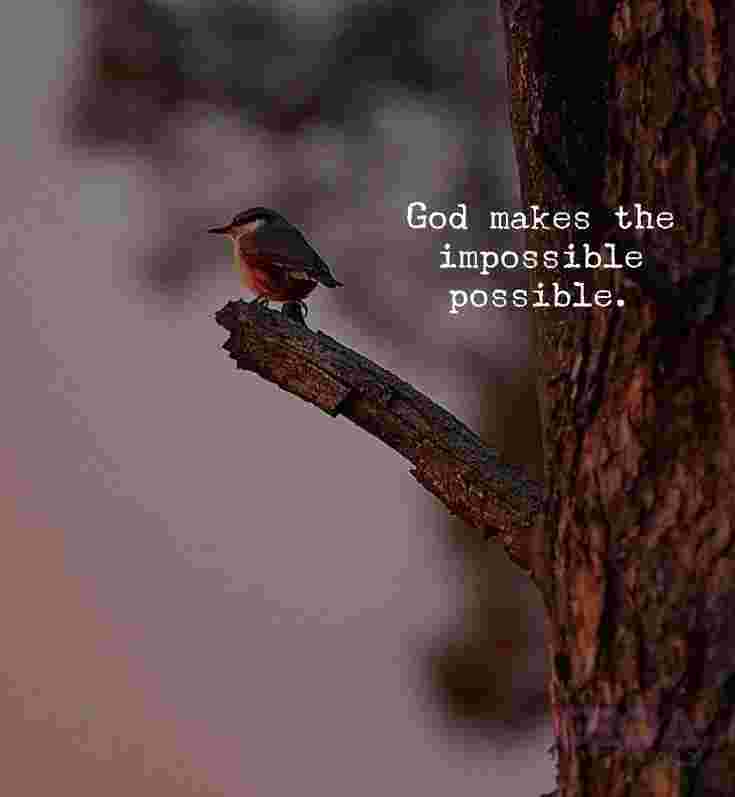Do Not Sacrifice Excellence For Time!
Generational Attention For A Generational Project
Why the Dedication of the Ark Project Needed a Review: A Comparison of the Faith Tabernacle and the Ark Legacy Project of Living Faith Church
by Daniel Breakforth
In the heart of Nigeria’s Ogun State stands a bold testament to faith, architecture and vision: In a portion of Canaanland marked out as 'Shiloh', the 50,000 capacity Faith Tabernacle, once the world’s largest church auditorium by seating capacity sits gracefully. Just a few meters away, rising steadily from the soil of Shiloh, another landmark is taking shape—the Ark Legacy Project.
Both megastructures were conceived and commissioned by Living Faith Church Worldwide (Winners’ Chapel International), under the leadership of Bishop David Oyedepo. While each project reflects the church’s spiritual mandate and commitment to large-scale development, they represent 2 distinct eras in the ministry's evolution.
Faith Tabernacle, a Monument of Supernatural Speed was commissioned in 1998. The Tabernacle was constructed following what the church describes as a prophetic mandate borne out of the 10 April 1982 utterance that 'at the base of this Commission , a tent will seat 50,000'. At the time, it was to commence, the Tabernacle was an ambitious undertaking—an auditorium designed to seat 50,400 worshippers under a single, column-free roof, a feature then rare even among commercial and stadium structures. One which timeframe of one year was rejected by all the big time Construction players in the industry, both foreign and local.
Groundbreaking took place on 29 August 1998 while construction began on 18 September 1998 and was miraculously completed in exactly 12 months, with the dedication service held on 18 September, 1999. I still remember the painting of the Tabernacle 7 days to dedication day while the glass panels above the Honour Entrance, the last to be fixed, were completed on the dedication morning.
Notably, the project was funded entirely without debt, relying solely on voluntary offerings and sacrificial giving from church members and church branches around the world. At the time of its completion, it earned a Guinness World Record as the largest church auditorium in the world by capacity. Beyond its architectural feat, the Faith Tabernacle became the anchor of the larger Canaanland vision, which would eventually include Covenant University, residential estates, and various ministry headquarters. This was captured in a 12 year project called the Canaanlsnd Project (CLP).
Fast forward to the Ark: A Transgenerational Vision:
While the Faith Tabernacle marked the fulfillment of an earlier prophetic vision, the Ark—also called the Legacy Project—is the embodiment of a long-term, transgenerational agenda. Envisioned in the mid-2010s with the first mention I recall of such a plan in April 2012 before the full blown announcement at Shiloh 2015, it was officially launched with a groundbreaking on Thursday 25 March 2021, The Ark is projected to seat about 109,000 worshippers, more than double the capacity of the Faith Tabernacle. In the event that all spaces within the Ark is occupied, it could take up to 200,000. This has been explained many times. The structure is designed to span a footprint of about 66,753 square metres, making it one of the most expansive church buildings under construction globally and the largest in the world by size. It will be 3 times the size of St Peters Basilica and more than 2 times Our Lady of Peace Basilica.
Unlike the single-level, single overflow Tabernacle, The Ark will feature multiple floors, including mezzanine levels, basement access and integrated smart infrastructure.
Architecturally, it departs from the simplicity of its predecessor, embracing a modernized, complex form that reflects not just growth in numbers but evolution in scope and functionality. Still, one principle remains unchanged: the Ark is being built without loans or foreign financial assistance.
The project is intentionally labeled a “legacy seed”—a structure meant to outlast its founders, speaking to future generations of the power of vision, commitment and spiritual dedication. The Founder has often emphasized that if Jesus tarries for another 1000 or 2000 years, He will meet the Ark filled with on fire and vibrant worshippers.
Contrasting Structures, Unified Purpose
Although both projects differ in scale, complexity and technological advancement, they are unified by a consistent philosophy: faith in divine instruction, financial integrity and spiritual purpose.
The Faith Tabernacle will forever be remembered as the project that validated the church's capacity for large-scale execution within improbable timelines. It is a symbol of obedience and supernatural accomplishment. In contrast, The Ark is about legacy—ensuring sustainability, scalability and continued relevance for decades or even centuries to come.
Moreover, both structures have cultural and symbolic importance beyond their physical form. They represent African-led innovation in global Christianity, challenging traditional Western-centric models of religious expansion. They also contribute to urban development, educational advancement and spiritual engagement across multiple continents through Winners' Chapel’s global network.
The Faith Tabernacle and the Ark Project are more than architectural marvels. They are physical embodiments of spiritual convictions, raised not merely to house congregations but to serve as landmarks of faith, vision, and transgenerational purpose. As The Ark continues to rise in Canaanland, it builds not just upon concrete and steel—but upon the unshakable foundation laid by the Faith Tabernacle, a foundation of faith, sacrifice and divine fulfillment.
Most projects anywhere close to this have taken between 12 and 15 years in modern times but none even close to the dimensions of the Ark. The nearest for now with 33 elevators, 8 chillers of 300 tons each and in terms of footprints is the KJC KINGDOME with a footprint of 58,400 sqm which took about 12 years as well as the Salvation Ministries Hand of God with 9 floors, 400 toilets in 20 units and a footprint of 56,800 sqm which has taken close to 15 years.
To the glory of God, we look forward to the dedication of this Generational Project with 129 elevators and escalators, 20 chillers of 600 tons each, 1,200 toilets, 12 floors and a footprint of 66,753 sqm at a time most suitable by the grace of God.
The glory of this latter house shall be greater than of the former, saith the Lord of hosts: and in this place will I give peace, saith the Lord of hosts.
Haggai 2:9
Generational Attention For A Generational Project
Why the Dedication of the Ark Project Needed a Review: A Comparison of the Faith Tabernacle and the Ark Legacy Project of Living Faith Church
by Daniel Breakforth
In the heart of Nigeria’s Ogun State stands a bold testament to faith, architecture and vision: In a portion of Canaanland marked out as 'Shiloh', the 50,000 capacity Faith Tabernacle, once the world’s largest church auditorium by seating capacity sits gracefully. Just a few meters away, rising steadily from the soil of Shiloh, another landmark is taking shape—the Ark Legacy Project.
Both megastructures were conceived and commissioned by Living Faith Church Worldwide (Winners’ Chapel International), under the leadership of Bishop David Oyedepo. While each project reflects the church’s spiritual mandate and commitment to large-scale development, they represent 2 distinct eras in the ministry's evolution.
Faith Tabernacle, a Monument of Supernatural Speed was commissioned in 1998. The Tabernacle was constructed following what the church describes as a prophetic mandate borne out of the 10 April 1982 utterance that 'at the base of this Commission , a tent will seat 50,000'. At the time, it was to commence, the Tabernacle was an ambitious undertaking—an auditorium designed to seat 50,400 worshippers under a single, column-free roof, a feature then rare even among commercial and stadium structures. One which timeframe of one year was rejected by all the big time Construction players in the industry, both foreign and local.
Groundbreaking took place on 29 August 1998 while construction began on 18 September 1998 and was miraculously completed in exactly 12 months, with the dedication service held on 18 September, 1999. I still remember the painting of the Tabernacle 7 days to dedication day while the glass panels above the Honour Entrance, the last to be fixed, were completed on the dedication morning.
Notably, the project was funded entirely without debt, relying solely on voluntary offerings and sacrificial giving from church members and church branches around the world. At the time of its completion, it earned a Guinness World Record as the largest church auditorium in the world by capacity. Beyond its architectural feat, the Faith Tabernacle became the anchor of the larger Canaanland vision, which would eventually include Covenant University, residential estates, and various ministry headquarters. This was captured in a 12 year project called the Canaanlsnd Project (CLP).
Fast forward to the Ark: A Transgenerational Vision:
While the Faith Tabernacle marked the fulfillment of an earlier prophetic vision, the Ark—also called the Legacy Project—is the embodiment of a long-term, transgenerational agenda. Envisioned in the mid-2010s with the first mention I recall of such a plan in April 2012 before the full blown announcement at Shiloh 2015, it was officially launched with a groundbreaking on Thursday 25 March 2021, The Ark is projected to seat about 109,000 worshippers, more than double the capacity of the Faith Tabernacle. In the event that all spaces within the Ark is occupied, it could take up to 200,000. This has been explained many times. The structure is designed to span a footprint of about 66,753 square metres, making it one of the most expansive church buildings under construction globally and the largest in the world by size. It will be 3 times the size of St Peters Basilica and more than 2 times Our Lady of Peace Basilica.
Unlike the single-level, single overflow Tabernacle, The Ark will feature multiple floors, including mezzanine levels, basement access and integrated smart infrastructure.
Architecturally, it departs from the simplicity of its predecessor, embracing a modernized, complex form that reflects not just growth in numbers but evolution in scope and functionality. Still, one principle remains unchanged: the Ark is being built without loans or foreign financial assistance.
The project is intentionally labeled a “legacy seed”—a structure meant to outlast its founders, speaking to future generations of the power of vision, commitment and spiritual dedication. The Founder has often emphasized that if Jesus tarries for another 1000 or 2000 years, He will meet the Ark filled with on fire and vibrant worshippers.
Contrasting Structures, Unified Purpose
Although both projects differ in scale, complexity and technological advancement, they are unified by a consistent philosophy: faith in divine instruction, financial integrity and spiritual purpose.
The Faith Tabernacle will forever be remembered as the project that validated the church's capacity for large-scale execution within improbable timelines. It is a symbol of obedience and supernatural accomplishment. In contrast, The Ark is about legacy—ensuring sustainability, scalability and continued relevance for decades or even centuries to come.
Moreover, both structures have cultural and symbolic importance beyond their physical form. They represent African-led innovation in global Christianity, challenging traditional Western-centric models of religious expansion. They also contribute to urban development, educational advancement and spiritual engagement across multiple continents through Winners' Chapel’s global network.
The Faith Tabernacle and the Ark Project are more than architectural marvels. They are physical embodiments of spiritual convictions, raised not merely to house congregations but to serve as landmarks of faith, vision, and transgenerational purpose. As The Ark continues to rise in Canaanland, it builds not just upon concrete and steel—but upon the unshakable foundation laid by the Faith Tabernacle, a foundation of faith, sacrifice and divine fulfillment.
Most projects anywhere close to this have taken between 12 and 15 years in modern times but none even close to the dimensions of the Ark. The nearest for now with 33 elevators, 8 chillers of 300 tons each and in terms of footprints is the KJC KINGDOME with a footprint of 58,400 sqm which took about 12 years as well as the Salvation Ministries Hand of God with 9 floors, 400 toilets in 20 units and a footprint of 56,800 sqm which has taken close to 15 years.
To the glory of God, we look forward to the dedication of this Generational Project with 129 elevators and escalators, 20 chillers of 600 tons each, 1,200 toilets, 12 floors and a footprint of 66,753 sqm at a time most suitable by the grace of God.
The glory of this latter house shall be greater than of the former, saith the Lord of hosts: and in this place will I give peace, saith the Lord of hosts.
Haggai 2:9
Do Not Sacrifice Excellence For Time!
Generational Attention For A Generational Project
Why the Dedication of the Ark Project Needed a Review: A Comparison of the Faith Tabernacle and the Ark Legacy Project of Living Faith Church
by Daniel Breakforth
In the heart of Nigeria’s Ogun State stands a bold testament to faith, architecture and vision: In a portion of Canaanland marked out as 'Shiloh', the 50,000 capacity Faith Tabernacle, once the world’s largest church auditorium by seating capacity sits gracefully. Just a few meters away, rising steadily from the soil of Shiloh, another landmark is taking shape—the Ark Legacy Project.
Both megastructures were conceived and commissioned by Living Faith Church Worldwide (Winners’ Chapel International), under the leadership of Bishop David Oyedepo. While each project reflects the church’s spiritual mandate and commitment to large-scale development, they represent 2 distinct eras in the ministry's evolution.
Faith Tabernacle, a Monument of Supernatural Speed was commissioned in 1998. The Tabernacle was constructed following what the church describes as a prophetic mandate borne out of the 10 April 1982 utterance that 'at the base of this Commission , a tent will seat 50,000'. At the time, it was to commence, the Tabernacle was an ambitious undertaking—an auditorium designed to seat 50,400 worshippers under a single, column-free roof, a feature then rare even among commercial and stadium structures. One which timeframe of one year was rejected by all the big time Construction players in the industry, both foreign and local.
Groundbreaking took place on 29 August 1998 while construction began on 18 September 1998 and was miraculously completed in exactly 12 months, with the dedication service held on 18 September, 1999. I still remember the painting of the Tabernacle 7 days to dedication day while the glass panels above the Honour Entrance, the last to be fixed, were completed on the dedication morning.
Notably, the project was funded entirely without debt, relying solely on voluntary offerings and sacrificial giving from church members and church branches around the world. At the time of its completion, it earned a Guinness World Record as the largest church auditorium in the world by capacity. Beyond its architectural feat, the Faith Tabernacle became the anchor of the larger Canaanland vision, which would eventually include Covenant University, residential estates, and various ministry headquarters. This was captured in a 12 year project called the Canaanlsnd Project (CLP).
Fast forward to the Ark: A Transgenerational Vision:
While the Faith Tabernacle marked the fulfillment of an earlier prophetic vision, the Ark—also called the Legacy Project—is the embodiment of a long-term, transgenerational agenda. Envisioned in the mid-2010s with the first mention I recall of such a plan in April 2012 before the full blown announcement at Shiloh 2015, it was officially launched with a groundbreaking on Thursday 25 March 2021, The Ark is projected to seat about 109,000 worshippers, more than double the capacity of the Faith Tabernacle. In the event that all spaces within the Ark is occupied, it could take up to 200,000. This has been explained many times. The structure is designed to span a footprint of about 66,753 square metres, making it one of the most expansive church buildings under construction globally and the largest in the world by size. It will be 3 times the size of St Peters Basilica and more than 2 times Our Lady of Peace Basilica.
Unlike the single-level, single overflow Tabernacle, The Ark will feature multiple floors, including mezzanine levels, basement access and integrated smart infrastructure.
Architecturally, it departs from the simplicity of its predecessor, embracing a modernized, complex form that reflects not just growth in numbers but evolution in scope and functionality. Still, one principle remains unchanged: the Ark is being built without loans or foreign financial assistance.
The project is intentionally labeled a “legacy seed”—a structure meant to outlast its founders, speaking to future generations of the power of vision, commitment and spiritual dedication. The Founder has often emphasized that if Jesus tarries for another 1000 or 2000 years, He will meet the Ark filled with on fire and vibrant worshippers.
Contrasting Structures, Unified Purpose
Although both projects differ in scale, complexity and technological advancement, they are unified by a consistent philosophy: faith in divine instruction, financial integrity and spiritual purpose.
The Faith Tabernacle will forever be remembered as the project that validated the church's capacity for large-scale execution within improbable timelines. It is a symbol of obedience and supernatural accomplishment. In contrast, The Ark is about legacy—ensuring sustainability, scalability and continued relevance for decades or even centuries to come.
Moreover, both structures have cultural and symbolic importance beyond their physical form. They represent African-led innovation in global Christianity, challenging traditional Western-centric models of religious expansion. They also contribute to urban development, educational advancement and spiritual engagement across multiple continents through Winners' Chapel’s global network.
The Faith Tabernacle and the Ark Project are more than architectural marvels. They are physical embodiments of spiritual convictions, raised not merely to house congregations but to serve as landmarks of faith, vision, and transgenerational purpose. As The Ark continues to rise in Canaanland, it builds not just upon concrete and steel—but upon the unshakable foundation laid by the Faith Tabernacle, a foundation of faith, sacrifice and divine fulfillment.
Most projects anywhere close to this have taken between 12 and 15 years in modern times but none even close to the dimensions of the Ark. The nearest for now with 33 elevators, 8 chillers of 300 tons each and in terms of footprints is the KJC KINGDOME with a footprint of 58,400 sqm which took about 12 years as well as the Salvation Ministries Hand of God with 9 floors, 400 toilets in 20 units and a footprint of 56,800 sqm which has taken close to 15 years.
To the glory of God, we look forward to the dedication of this Generational Project with 129 elevators and escalators, 20 chillers of 600 tons each, 1,200 toilets, 12 floors and a footprint of 66,753 sqm at a time most suitable by the grace of God.
The glory of this latter house shall be greater than of the former, saith the Lord of hosts: and in this place will I give peace, saith the Lord of hosts.
Haggai 2:9
0 Comentários
1 Compartilhamentos
90 Visualizações





























